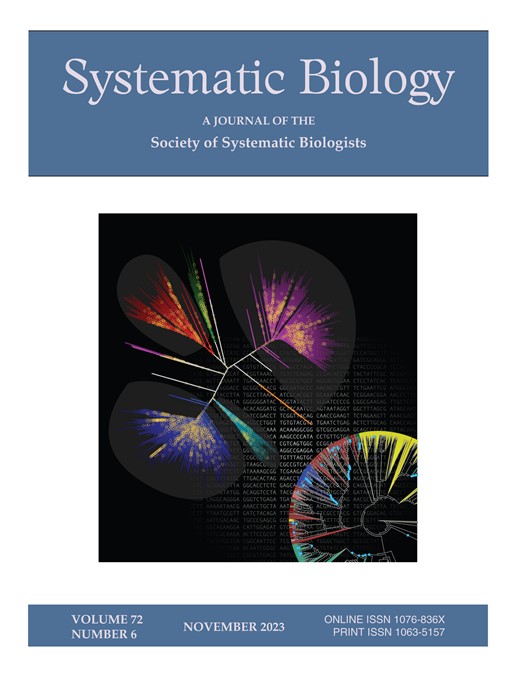Type genomics: a Framework for integrating Genomic Data into Biodiversity and Taxonomic research.
IF 6.1
1区 生物学
Q1 EVOLUTIONARY BIOLOGY
引用次数: 0
Abstract
Name-bearing type specimens have a fundamental role in characterising biodiversity, as these objects represent the physical link between a scientific name and the biological organism. Type specimens are usually deposited in natural history collections, which provide key infrastructure for research on essential biological structures and processes, while preserving records of biodiversity for future generations. Modern systematics increasingly depends on genetic and genomic data to differentiate and characterise species. While the results of genome sequencing are often connected to a physical voucher specimen, they are rarely derived from the ultimate taxonomic reference for a species, i.e., the name-bearing type specimens. This is a known but under-appreciated problem for ensuring the replicability of findings, especially those that affect the interpretation of biodiversity distributions and phylogenetic relationships. Destructive sampling of museum specimens, particularly of type material, often carries a high risk of sequencing failure, and thus the cost of damage to the specimen may outweigh the resulting benefit. Both taxonomic work and genome sequencing require specialist skills and there are often communication gaps between the respective experts. A new, harmonised approach, maximising information extraction while minimising risk to type specimens, is a critical step forward toward linking disciplines across biodiversity research and promoting a better taxonomic and systematic understanding of eukaryotic diversity. The genetic make-up of a type specimen is a fundamental part of its biological information, which can and should be made freely and digitally available through type genomics. Here we describe guidelines for the use of nomenclatural types in genome sequencing approaches considering different kinds of types in different stages of preservation and different data types.类型基因组学:将基因组数据整合到生物多样性和分类学研究中的框架。
命名型标本在描述生物多样性方面具有根本作用,因为这些标本代表了学名与生物有机体之间的物理联系。模式标本通常存放在自然史馆藏中,为研究重要的生物结构和过程提供了重要的基础设施,同时为后代保存了生物多样性的记录。现代系统分类学越来越依赖于遗传和基因组数据来区分和表征物种。虽然基因组测序的结果通常与实物凭证标本相关联,但它们很少来自物种的最终分类参考,即命名型标本。这是一个已知但未得到充分重视的问题,因为要确保研究结果的可重复性,特别是那些影响对生物多样性分布和系统发育关系的解释的结果。对博物馆标本进行破坏性采样,特别是对类型材料进行破坏性采样,往往有很高的测序失败风险,因此对标本的破坏成本可能超过由此带来的收益。分类学工作和基因组测序都需要专业技能,而且各自的专家之间经常存在沟通缺口。一种新的协调方法,在最大限度地提取信息的同时将模式标本的风险降到最低,是将生物多样性研究的各个学科联系起来并促进对真核生物多样性更好的分类和系统理解的关键一步。模式标本的基因组成是其生物信息的基本组成部分,可以而且应该通过模式基因组学免费和数字化提供。在这里,我们描述了在考虑不同保存阶段和不同数据类型的不同类型的基因组测序方法中使用命名类型的指南。
本文章由计算机程序翻译,如有差异,请以英文原文为准。
求助全文
约1分钟内获得全文
求助全文
来源期刊

Systematic Biology
生物-进化生物学
CiteScore
13.00
自引率
7.70%
发文量
70
审稿时长
6-12 weeks
期刊介绍:
Systematic Biology is the bimonthly journal of the Society of Systematic Biologists. Papers for the journal are original contributions to the theory, principles, and methods of systematics as well as phylogeny, evolution, morphology, biogeography, paleontology, genetics, and the classification of all living things. A Points of View section offers a forum for discussion, while book reviews and announcements of general interest are also featured.
 求助内容:
求助内容: 应助结果提醒方式:
应助结果提醒方式:


